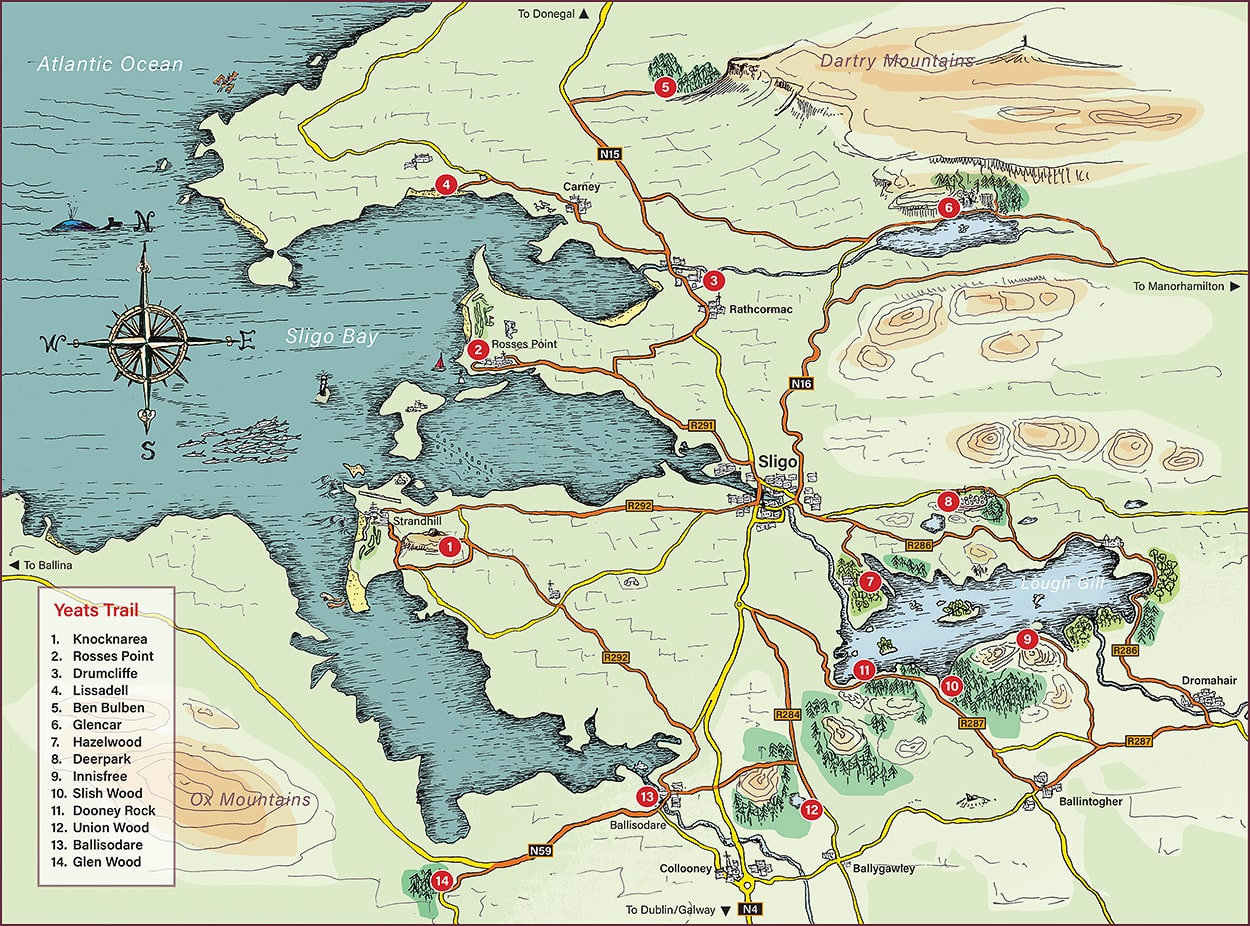When he came to write this play, he returns to familiar theme of the Irish Heroic Age. It is loosely based on the mythological hero Cuchulain as the young man. The combination of dance, song, masks and ritual with the austere stylisation of staging and design of the Noh style was completely new to the English-speaking theatre and opened exciting experimentation for Yeats. Both the ‘Old Man’ and the ‘Young Man’ seek immortality in the powers attributed to the well’s magical waters. Throughout his life, Yeats drew on the traditions handed down by generations of Sligo storytellers.
In medieval times the Well of Tullaghan was regarded as one of the Mirabilia Hiberniae, the Wonders of Ireland because of the magical qualities of the water reputed to change in the course of each day from salty to fresh and to ebb and flow with the tide. It was a festival of Lughnasa site.
After the Famine the tradition grew that if you threw a pebble at the Hungry Rock whenever you pass, you will never go hungry on your journey.



